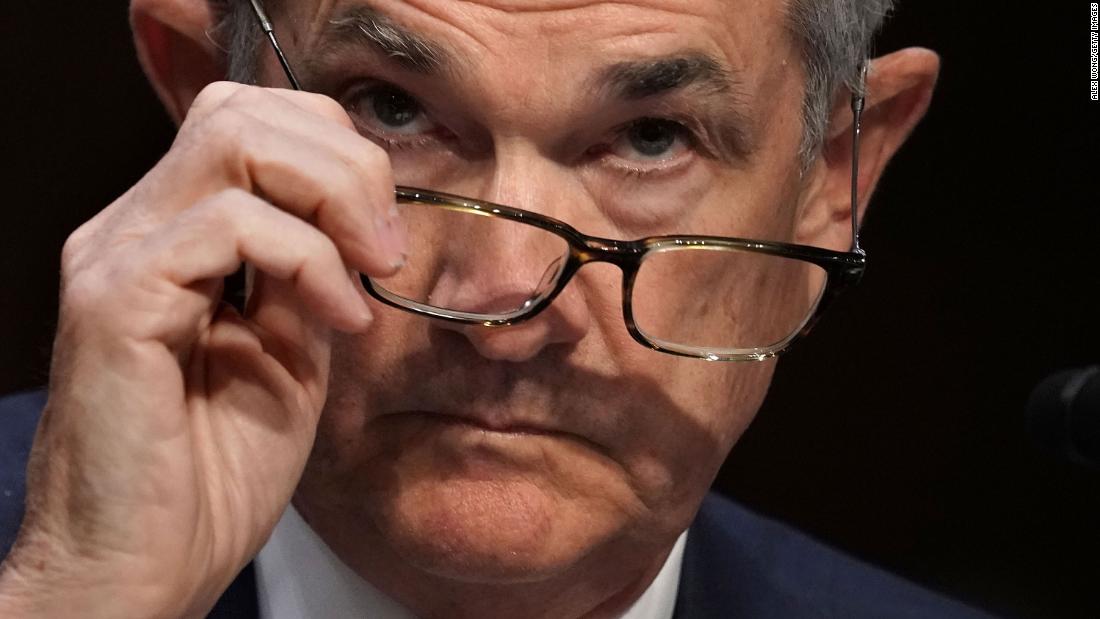
The Federal Reserve unveiled a fresh proposal Wednesday for regulating more than a dozen US banks that takes advantage of greater oversight authority recently granted by Congress -- and marks a step back from the tight controls imposed after the 2008 financial crisis.
The plan was approved 3-to-1 by the Fed's Board of Governors, with members appointed by President Donald Trump casting the deciding votes.
"Congress and the American people rightly expect us to achieve an effective and efficient regulatory regime that keeps our financial system strong and protects our economy, while imposing no more burden than is necessary," said Federal Reserve Chairman Jerome Powell, a former investment banker appointed by Trump last year.
Since the passage of the 2010 Dodd-Frank regulatory reform law, regulators have applied one simple mechanism -- a threshold of $50 billion in assets -- to trigger a slew of strict rules on those institutions requiring them to bolster their balance sheets to minimize risk of collapse.
Congress earlier this year passed a bill raising the level at which banks are considered "too big to fail" to $250 billion.
Under Wednesday's proposal, the Fed will have more discretion to review how complex a firm may be or how connected it is to the broader financial system as other factors in deciding how onerous or prescriptive a bank should be regulated.
The draft proposal divides financial firms into four new categories based on a variety of risk factors, including international activity, off-balance-sheet exposure and reliance on short-term wholesale funding.
While no changes will be applied to the country's behemoth banks like JPMorgan Chase, Wells Fargo and Goldman Sachs under the new proposal, banks under $250 billion in assets will now see softer rules applied.
The Fed also created a new regulatory category for the country's biggest regional banks, which are not as large as the megabanks and have less than $700 billion assets or have more than $75 billion in cross-jurisdictional activity. Those firms will see a lighter regulatory touch than their megabank rivals but not the same level of relief as smaller regionals.
"These proposals embody an important principle: the character of regulation should match the character of a firm," said Randal Quarles, the Fed's regulatory czar, in prepared remarks.
The newly tailored proposal by regulators responds to legislation sponsored by Idaho Republican Sen. Mike Crapo and passed by Congress five months ago is aimed at easing rules for midsize regional banks like SunTrust Inc., Fifth Third, KeyCorp and American Express.
"The Crapo bill gives the Fed a fair amount of flexibility for those banks in the $100 billion to $250 billion range and in some ways even more than it had before," said Ian Katz, a director at Capital Alpha Partners."Until it's all settled there is some uncertainty how rigorous or not those regulations will be for those banks."
Those institutions that have hold assets between $100 billion and $250 billion will no longer have meet two liquidity buffers, meaning they won't have to hold assets they can sell quickly for cash, and would only be subject to the Fed's stress test exercise every two years.
It still remains unclear if those smaller regionals will have to comply with the Fed's yearly checkup next year, but Quarles said he hopes for those banks that will be moving to stress tests every two years 2019 will be an "off-cycle" year.
Four other bigger regional institutions -- US Bancorp, Capital One, PNC Financial and Charles Schwab -- which also have less than $700 billion in asset or more than $75 billion in cross-border activity or non-bank assets will also see minor relief by now having to meet a lower liquidity standard. They would still face yearly stress tests and submit their capital plans annually to the Fed.
US Bancorp commended the Fed's proposal, adding it "strikes a good balance." Representatives from PNC and Capital One could not be immediately reached for comment.
Overall, the new proposed changes would decrease the amount of required capital banks would have to hold by $8 billion, or a change of less than 1%, according to estimates by the Fed. And potentially lower the amount of highly liquid assets firms carry, which totals $3.1 billion, by as much as 2.5%.
One Fed governor, Lael Brainard -- an appointee of President Barack Obama -- objected to the Fed's new plan, arguing the proposal goes well beyond what Congress intended and raises the risk that American taxpayers will be on the hook again.
"I see little benefit to the institutions or the system from the proposed reduction in core resilience that could justify the increased risk to financial stability and the taxpayer," Brainard said at the meeting.
Better Markets President and CEO Dennis Kelleher called the Fed's actions "unjustified" and "unwise" so late in the business cycle following a $1.5 trillion tax cut and a massive government spending bill.
"Deregulating some of the largest banks in the country will make the financial system less safe, less stable and less protected from another crash," said Kelleher in a statement.
Bagikan Berita Ini














0 Response to "Fed proposes softening 'too big to fail' rules on US banks"
Post a Comment